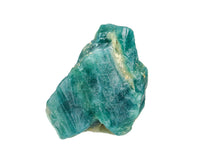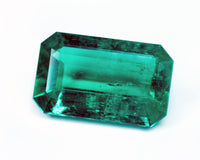- 1. Jade
- 2. Jade, The Meaning and History
- 3. Two Variety of Jade
- 3-1. Jadeite, its Types, and Physical Properties
- 3-2. Nephrite, Its Types, and Physical Properties
- 4. Jade from KenKenGems
Jade
Since time immemorial, jade has been valued as a potent remedy for the diseases of the genitourinary and musculoskeletal systems. Its very name indicates that it fights kidney inflammation and eliminates reproductive disorders. As for its metaphysical abilities, the stone is able to promote prudence, love and peace, gives self-confidence, and provides protection from evil. Jade is very powerful and versatile. An explanation for this is surprising – jade is actually two different minerals.
Jade, The Meaning and History
The term ‘jade’ appeared during Spanish expansion into Latin and Central America and it means ‘lumbar stone’ (piedra de ijada in Spanish). Green opaque stones were credited with the ability to remove kidney stones, hence the name. The indigenous population of both Americas highly valued jade for its healing properties. Besides, Native Americans used the stone for decorative carving, and they spent centuries mastering their carving skills.
Jade was known and loved not only in the New World, but also in other parts of the globe. The mineral was sacred in ancient China. It personified longevity and had the significance as the imperial gem. Many mummies found on the territory of the former Chinese Empire were dressed in jadeite clothes: it was believed that the stone could preserve the body after death.
On top of that, jade was widely used to craft utilitarian objects. The Chinese and Japanese made jade dishes, sculptures of gods, decorative items, furniture, and even jadeite pillows. They believed that stone had a very beneficial effect on their aura, health, and the eventfulness of their lives.
Two Variety of Jade
It was (and still is) common to call any opaque green stone jade. Many minerals have alternative names featuring the word jade. Green aventurine was called Indian jade, grossular is otherwise known as garnet or Transvaal jade, green limestone is dubbed Mexican jade, Vesuvianite is Pakistani jade, amazonite is Amazonian jade, chrysoprase is Swiss jade, serpentine is Korean jade, plus there were many other historical jades.
In 1863, the French scientist Alexis Demour discovered that jade is not a single mineral. He split jades into two separate gems: jadeite and nephrite.
Jadeite, its Types, and Physical Properties
Jadeite is a semi-precious stone, sodium and aluminum silicate featuring the hardness of 6.5-7.0 on the Mohs scale.
In nature, jadeite jade occurs in every shade of green, from the darkest to the lightest. The color of the stone depends on a deposit as well as admixtures in its composition. The inclusion of chromium gives a bright green color while iron provides dull green. In addition, the mineral is found in white, gray, orange, brown, green, lavender, black, and even pink varieties, although the latter is extremely rare. Red, burgundy, and yellow tints appear in jadeite after prolonged weathering on the surface of the earth. The gem picks up black color due to inclusions of magnetite. Stones found in mountain crevices are predominantly light colored.
Jadeites boast a glassy luster. Due to dense pigmentation, stones are not transparent but sunlight can shine through. You can distinguish jadeite by looking at its internal structure. It is granular, orange peel-like, and can be discerned with a naked eye.
Jadeite is available in the following varieties based on its color and texture:
•Imperial jadeite is translucent with uniform color. This type of jadeite is often compared to emerald due to its color but it has a touch of yellow in it. In China, this variety of jadeite is called "fei tsui", which means "kingfisher feathers". This is the most valuable of all jadeites.
•Commercial is opaque jadeite displaying veins and translucent spots of emerald green color.
•Utility jadeite has a deep green color and opaque structure. This variety is used for ornamental purposes.
Additionally, natural jadeite jade falls into three categories based on the method of treatment:
•A - untreated;
•D - bleached and impregnated;
•C - bleached, impregnated, and dyed.
Nephrite, Its Types, and Physical Properties
Nephrite jade is a mineral of the inosilicate class. A distinctive feature of this stone is its increased viscosity. It is really hard to break. Weapons made of nephrite are almost as strong as steel ones. At the same time, the hardness of the stone is average, no more than 6.5 on the Mohs scale.
Nephrite can have a vitreous luster but more commonly it features a waxy matte surface. The stone is translucent only in thin chips and plates. The structure of the gem is uniform and even. After polishing, it becomes very smooth.
The gem offers a range of colors, which depend on the content of admixtures.
The most common is green nephrite displaying all kinds of shades: marsh, herbal, apple, emerald, and yellowish-green. Iron and chromium are responsible for these hues.
White nephrite is a translucent stone ranging from milky white to light yellow. In China, it is traditionally known as mutton fat jade. In ancient times, it had a sacred meaning and only emperors could have items made of this mineral.
Chicken bone nephrite is opaque of white, light brown, and gray hues.
Dianite is a blue variety of nephrite jade. The stone was discovered relatively recently, in 1997. It was named after Princess Diana, who died in the same year.
Nephrite can also exhibit a cat’s eye effect. These rare stones are available in brown-green and dirty yellow colors.
Depending on the texture, nephrite jade is divided into 4 groups:
•Cloudy - it has smooth transitions of different shades of the same color;
•Uniformly colored. More often than not, these stones are translucent;
•Dappled - it features patches and spots due to the admixtures of iron, manganese or chlorine. Typically, these spots are pink or yellow.
•Banded – this type showcases unevenly distributed layers. Streaks of brown indicate iron oxides in the cracks of the mineral.
Jade for sale from KenKenGems
In times as old as the hills, jade was the preserve of emperors, rulers, and people of noble blood. Today, it is available to everyone. KenKenGems is committed to delivering jadeite and nephrite jades in the color, shape, size, and form that you need. We supply jade beads, loose stones, large individual pieces, gems in settings of precious metals, and other. When buying jade from us, you get unparalleled quality, fast delivery, and a pleasant experience at all times.








